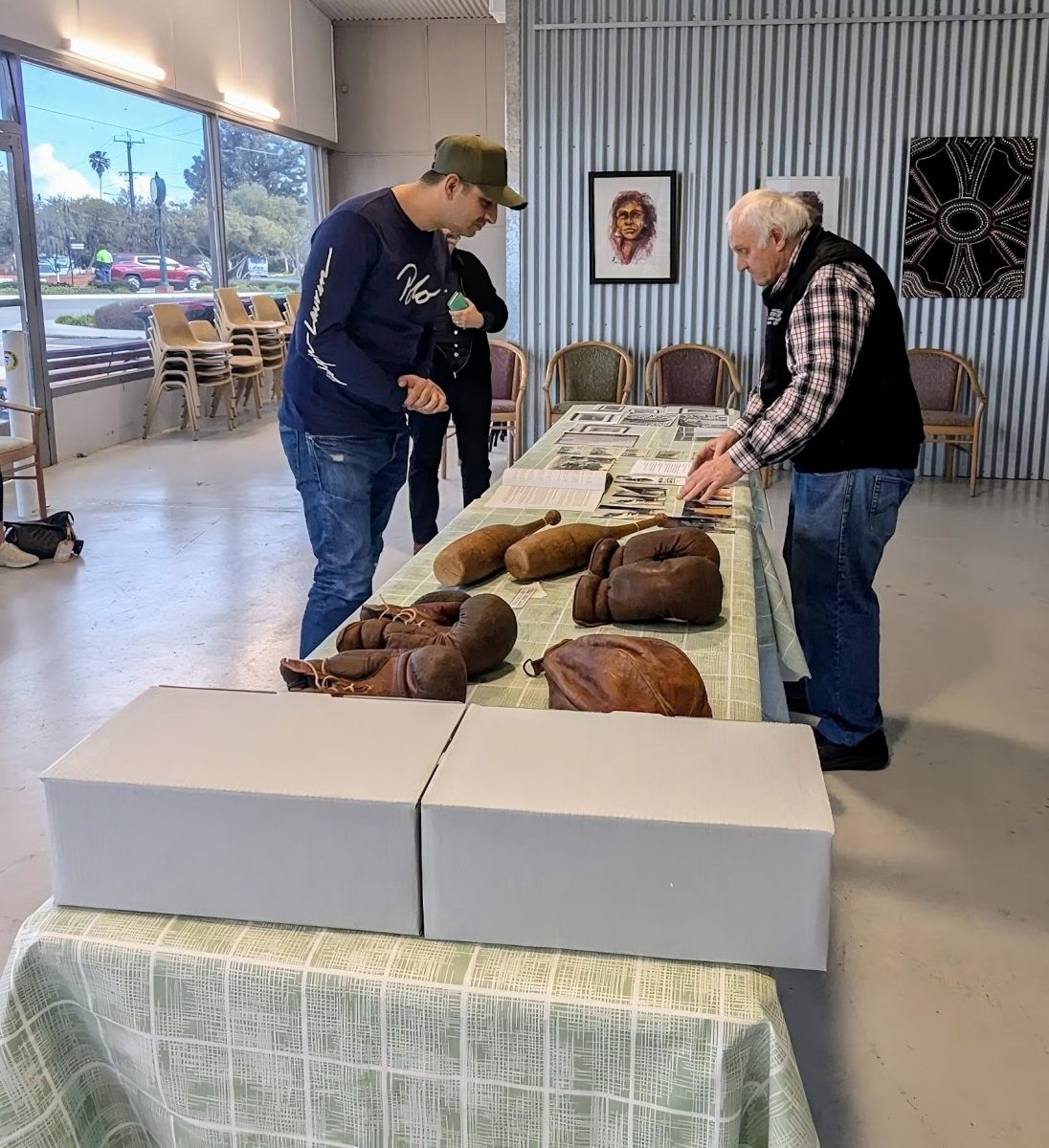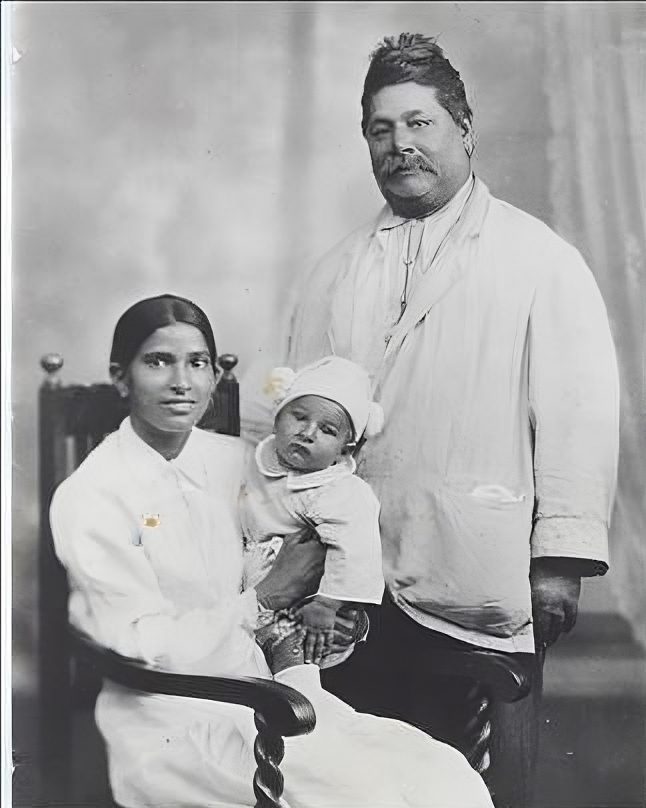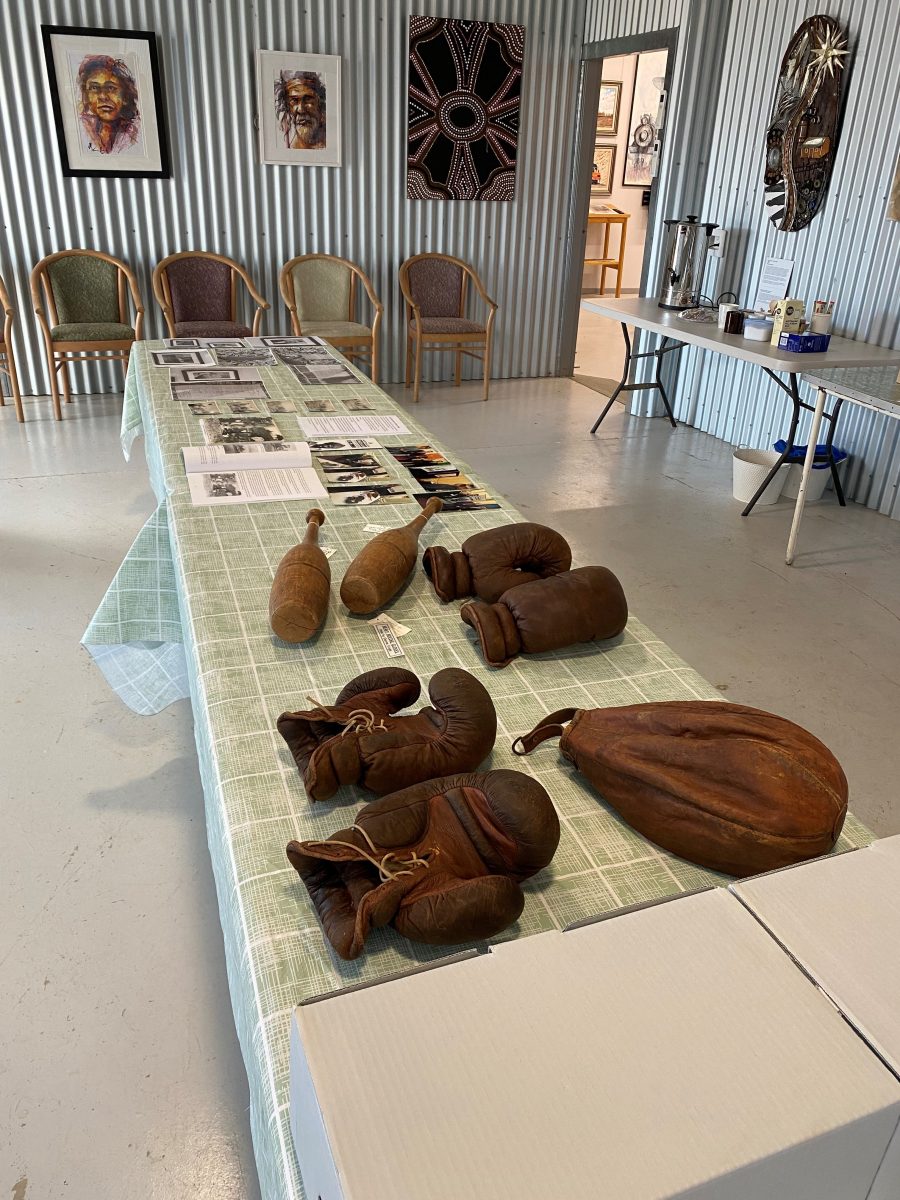
Museum Secretary, Paul Creek, shows Mark Malhi, great-grandson of Gharne Singh Malhi, objects from the Gharne Singh Collection. Photo: Lockhart Shire Council.
While the 1901 White Australia Policy prevented people with dark skin from migrating to Australia for decades after that, up to 3000 Punjabi Indians were able to arrive before that prohibition – in the 1890s.
These migrants were young male guest workers who came to earn money to send back home. They were employed as farm labourers in Queensland and Northern NSW and also worked as ‘hawkers’ in the Riverina, travelling salesmen who went from farm to farm selling their products.
Lockhart’s Greens Gunyah Museum is celebrating the history of a legendary Indian hawker, farmer and boxer of that era – Gharne Singh Malhi.
“Gharne used to take his horse and wagon from farm to farm selling imported clothing and spices from India,” museum secretary Paul Creek said.
“Eventually, he decided to buy a farm 10 km east of Lockhart, in an area called Brookdale and farmed there for several years.
“He was also a boxer and wrestler. Our museum holds a set of boxing gloves, gymnastics gloves, as well as a lot of photos and information given to us by the family.”

Gharne Singh Malhi with wife Shram and son Jimmy. Photo: Supplied.
Mark Malhi, the 36-year-old great-grandson of Gharne, recently visited Lockhart to provide the museum with more photos and documents. He also donated $2400 to cover the cost of a new Gharne storyboard.
“I talk about Gharne to my kids almost every day,” Mark said. “He was an impressive figure for his time – he stood at six foot three inches tall and weighed 120 kg.
“His life was very tough, but the sacrifice, discipline and suffering that Gharne and his children endured laid the foundation for the more comfortable life our family enjoys today.”
Charles Sturt University researcher Professor Dirk Spennemann chronicled the history of Gharne and his peers in a 2018 study.
“The [Indian] hawkers left their mark on the land. They bought cheaper plots of land to avoid objections to parking their wagons in regional centres, such as Albury and in smaller rural towns. They became ratepayers and landholders,” Professor Spennemann wrote.
“The hawkers faced marginalisation and racial prejudice. It was assumed that Australian women would be threatened by these virile young men. But despite the racism, the hawkers made a living because they provided a vital intermediary service between country towns and outlying farms.”
Mark Malhi, who works as a financial advisor in Brisbane, says he appreciates how his great-grandfather faced discrimination.
“But on the flipside, the Lockhart community really embraced him,” Mark said.
“Gharne really assimilated himself into the culture; he donned the Australian hat; he wore pioneer clothing and a cowboy tie. He had hundreds of people at his funeral, he’s had countless articles written about him and his farm in Lockhart still displays the Singh name.”
The pioneering Indian farmer was known for his athleticism as much as his entrepreneurship.
“He was a good boxer. He’d come into town on a Saturday night and have plenty to drink. Nobody was game to fight him because he was so athletic, but apparently a few did and he ended up in the local lockup a couple of times,” Mr Creek said.

Lockhart’s museum is expanding its Gharne Singh Malhi collection. Photo: Lockhart Shire Council.
In 1935, Gharne Singh Malhi died of pneumonia, aged 64.
“His family wanted to cremate him but it was during summer and bushfire restrictions made it difficult. They got permission from council to have a cremation in the middle of a ploughed up paddock. It was done according to the Sikh customs; the town of Lockhart sold out of butter, as they put that on the fire as part of the process,” Mr Creek said.
“We have the black and white photos of the cremation here in the museum. The ashes were scattered in the Murrumbidgee River. His widow and three sons went back to India and they returned to Australia and settled in Woolgoolga, on the Northern NSW coast.”
Woolgoolga is now the site of a Sikh Heritage Museum.
“Greens Gunyah Museum is transferring a pair of Gharne Singh Malhi’s boxing gloves, punching bag and copies of photos to the Sikh Heritage Museum,” Lockhart museum advisor Margot Jolly said.
“Each museum will now be able to have a similar display about Gharne. There is a large Indian community around Woolgoolga and many of them are descended from Gharne.”
Lockhart’s Greens Gunyah Museum, which displays Gharne Singh Malhi memorabilia, is open every day from 10 am to 2 pm.










